We announced our new product, CERV-1000 for high occupant density indoor environments in April. Now, we’re pleased to announce installation of the first of twelve CERV-1000 units in Mary Miller Junior High School classrooms in Georgetown, Illinois. Figure 1 shows the first CERV-1000 unit on its way to school after a few months of shakedown testing at our facility in Urbana Illinois. Build Equinox has worked with the Georgetown-Ridge Farm (G-RF) school district for two years investigating indoor air quality in their schools, and developing solutions for managing indoor air quality in an energy efficient and labor efficient manners.
CERV-1000 units deliver up to 1000cfm of fresh air with 3 tons of high efficiency, cold temperature heat pump comfort conditioning. UVGI (ultraviolet germicidal irradiation) integrated into the unit further sanitizes classroom air while energy recovery cores provide exceptional energy efficiency.
There are too many features to describe in one article. We will have periodic updates as this revolutionary product moves into more projects. For now, we provide a few highlights from our first CERV-1000 installation.
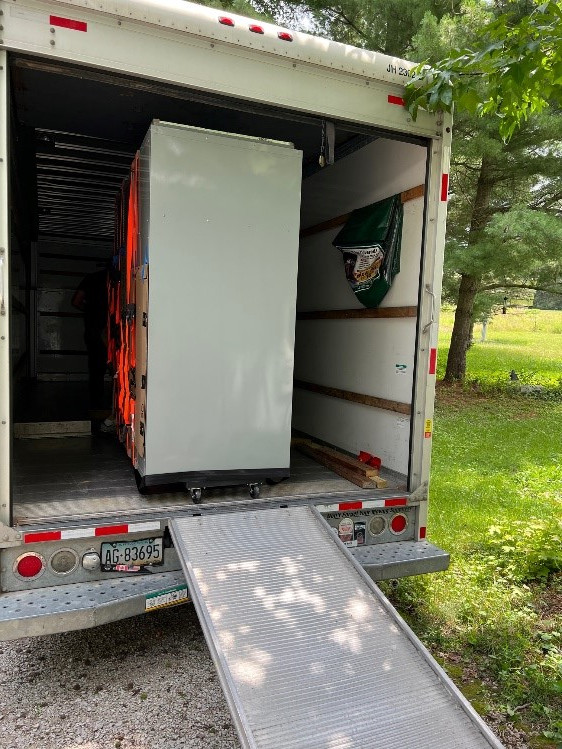
ASHRAE Standard 241 and Improved Health and Productivity
CERV-1000 already meets ASHRAE’s recently approved 241-2023 (“Control of Infectious Aerosols”) ventilation standard. Build Equinox, for several years prior to the pandemic and today’s rampant wildfire smoke, has been urging transition from today’s “edge-of-sickness” ventilation standards (ASHRAE 62.1 and 62.2) to ventilation standards based on health and productivity. ASHRAE Standard 241 is a substantial step toward our Build Equinox healthy Indoor Air Quality Standard.
As ASHRAE Standard 241 propagates throughout the US and beyond, we will see a remarkable reduction of sick days and increased productivity. Changing from today’s “minimum acceptable” ventilation to human-healthy ventilation will reduce sick days by 40%, or 1 sick day per person per year, for a nationwide potential savings of 330 million sick days with an estimated value of $165 Billion per year.
CERV-1000 units simplify complex balancing of air quality management and comfort conditioning. With three tons of high performance, cold temperature heat pump capacity integrated into CERV-1000 units, older buildings with fossil fuel-fired boilers and no ventilation can leapfrog to de-carbonized comfort conditioning with automatically managed healthy air quality.
Can we reverse the growth of asthma and allergies that have rapidly risen over the past few decades as our buildings have become better sealed, immersing us in unnatural indoor environments filled with chemicals foreign to our bodies? We think so!
CERV-1000 Rolling Renovation and Installation
A major objective for the CERV-1000 is ease-of-installation. Our goal was to design the unit such that a school’s maintenance staff or a community’s local HVAC businesses can install units on a “rolling renovation” basis. Installation on a classroom-by-classroom basis by a local community’s HVAC personnel results in a community spending money on itself to improve their community’s school facilities.
G-RF’s MMJH school’s facility and operations department has HVAC expertise to install their twelve CERV-1000 units. Installation time and labor per unit is less than 2 days with 2 people (4 person-days per unit installation). Installation steps consist of:
• Provide power (240VAC, 40amp) to the CERV-1000
• Install heat pump outdoor unit (ODU) and electric disconnect
• Run two sets of refrigerant “linesets” (1/2” and 3/8” insulated copper tubing per lineset) between the CERV-1000 and ODU
• Pressure test and evacuate refrigerant lines
• Run ODU power from CERV-1000 to the outdoor electrical disconnect
• Run two sets of 3 conductor (14ga) wires from the two CERV-1000 heat pump heads to the ODU
• Connect ¾” condensate drainage line to drain outside or inside
• Connect CERV-1000 fresh air intake and exhaust air outlet to an external wall opening (12” diameter, insulated ducting)
• Switch power on, connect CERV-1000 online to the CERV-ICE (CERV-Intelligently Controlled Environment, pronounced “service”), and begin breathing fresh air
Figure 2 and Figure 3 show the southwest and northwest sides of the school where 9 of the classroom units will be installed. Figure 2 shows the classroom location of the first unit. CERV-1000 Unit#1 will be followed by installation of 11 more units for conversion of 12 junior high school classrooms to automated management of air quality and comfort. Prior to shipment of the next eleven units, G-RF facilities personnel can install heat pump outdoor units and electrical disconnects. CERV-1000 installation is flexible, and can occur without disrupting school operation and installation labor constraints.
Figures 4 through 7 show other aspects of CERV-1000 unit installation.

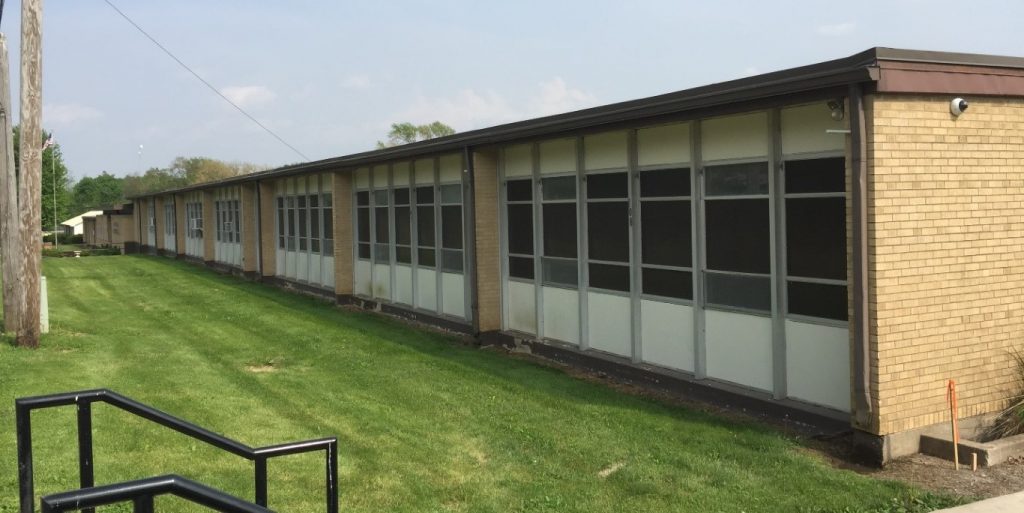
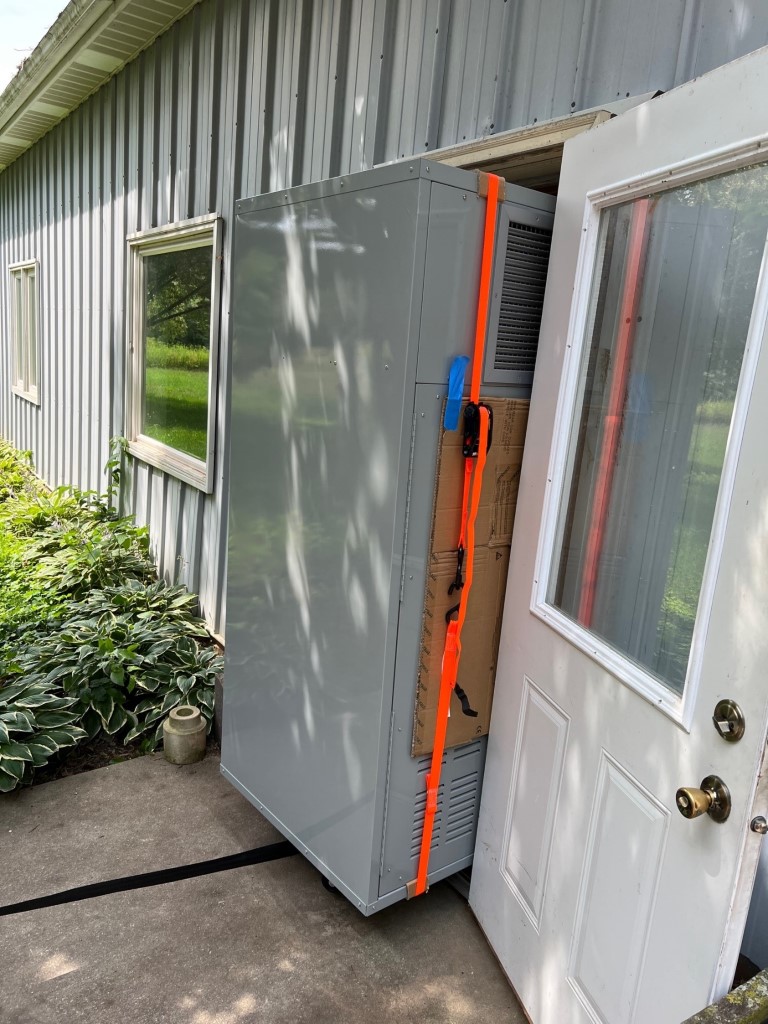
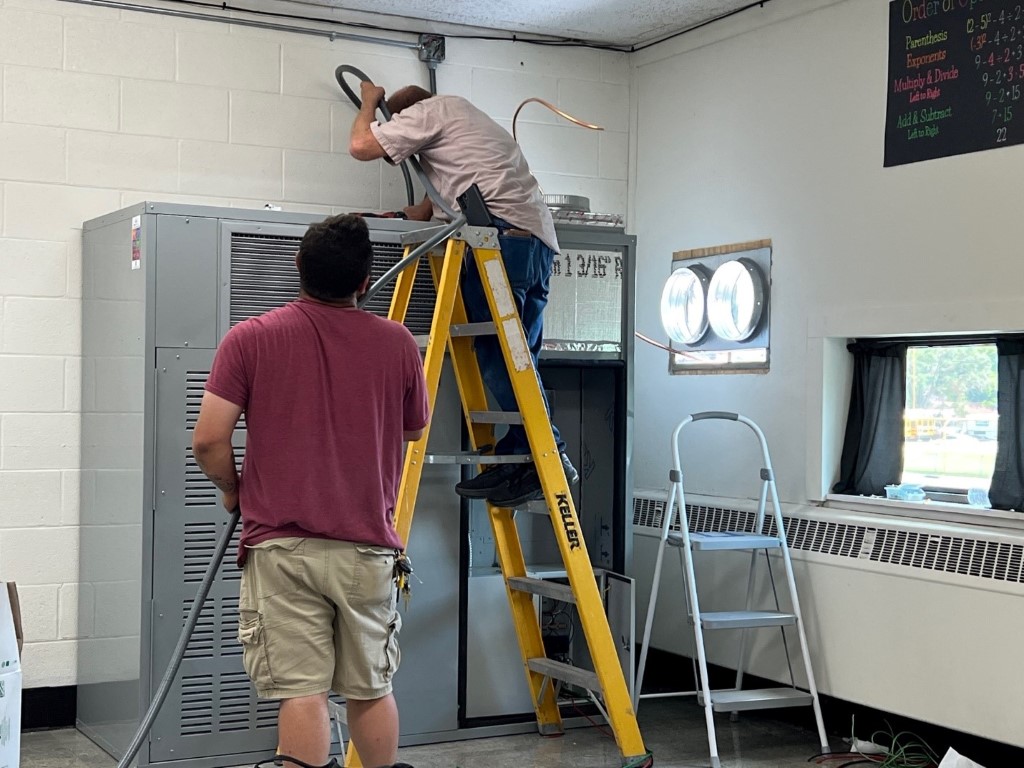
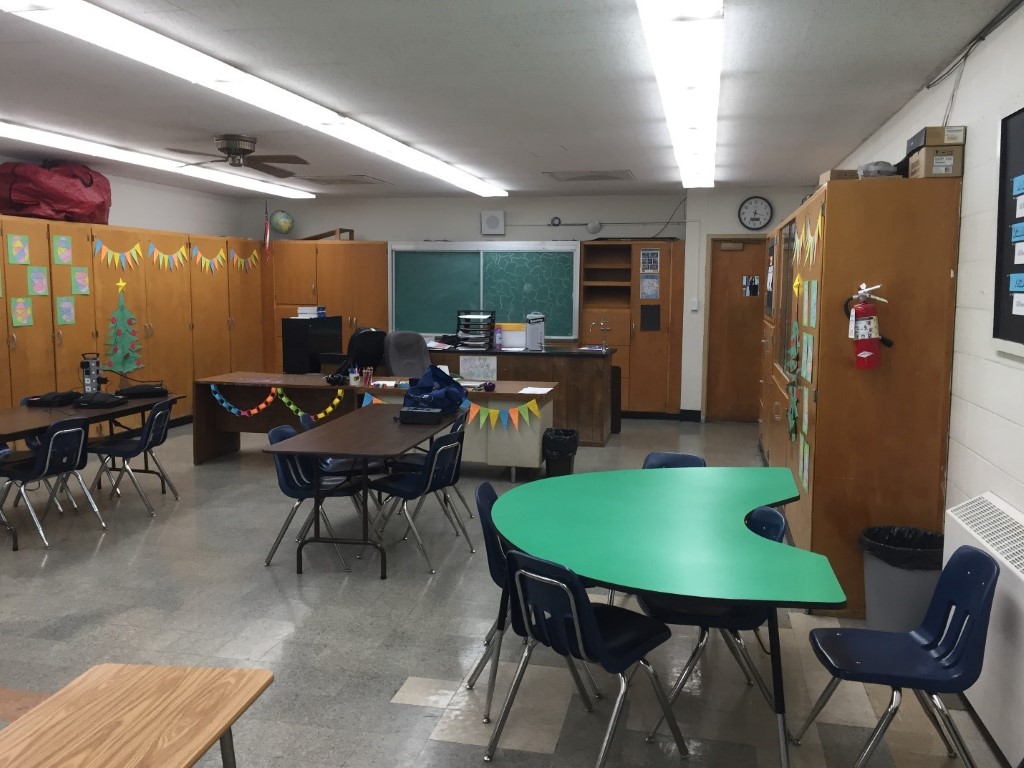
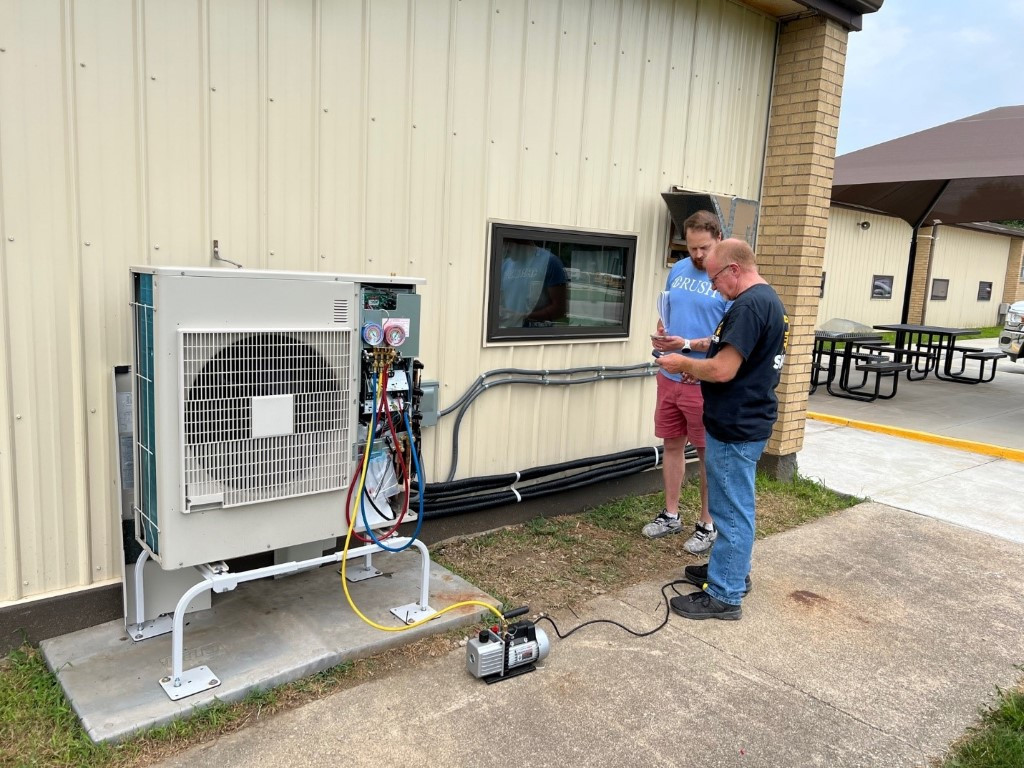
Classroom Quiet Operation
CERV-1000 Unit #1’s new home is an 8th grade mathematics classroom (Figure 8) in Mary Miller Junior High School (MMJH) in Georgetown, Illinois. We’ve been told by every junior high school teacher we’ve met that there is no such thing as a quiet junior high school classroom. That is not an excuse to place noisy machines in classrooms. CERV-1000 units are also designed for other high occupant density spaces such as restaurants and houses of worship in addition to noisy junior high school classrooms.
Designing a 1000cfm air flow ventilation machine that can be placed in the room is not a simple task. Our objective was to be quieter than the classroom’s window AC unit we replaced.
As shown in Figure 9 sound data photos, we succeeded. Not by just a bit, but by a lot! Sound data from the CERV-1000 classroom with its indoor fan running at high speed is more than 10 times quieter than noise from an adjacent, identical classroom with its window AC unit operating. Decibel readings are like earthquake readings with a difference of 10dB indicating 10 times louder noise. The window AC unit registers at a level similar to normal conversation while the CERV-1000 is similar to a quiet street.
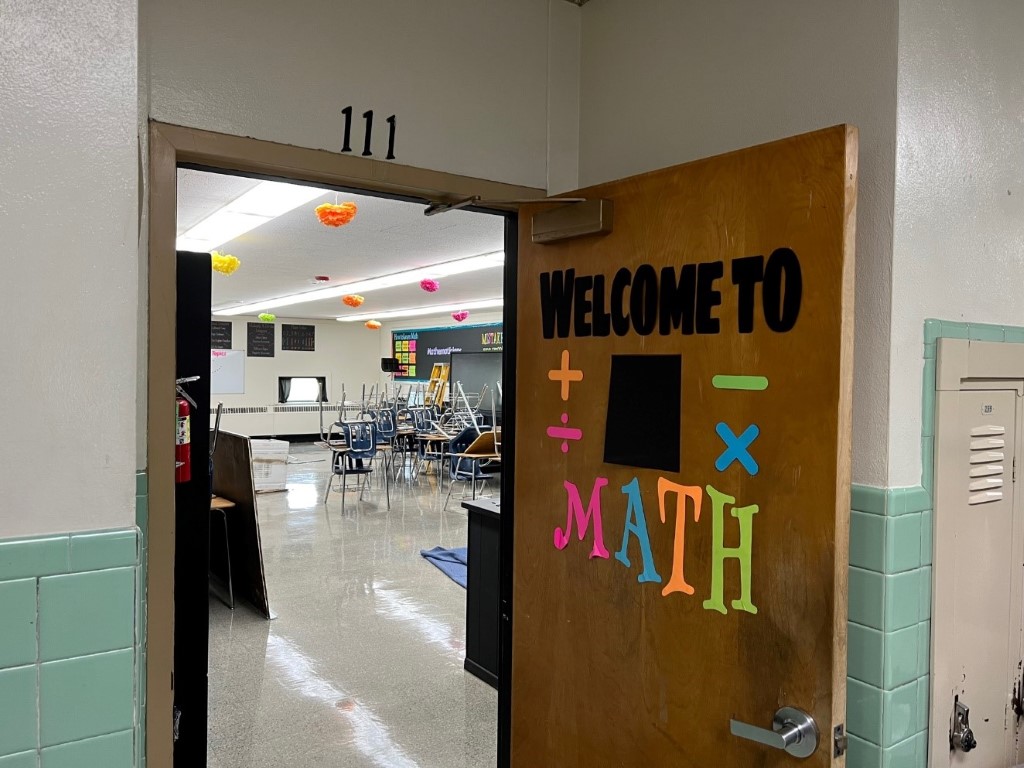
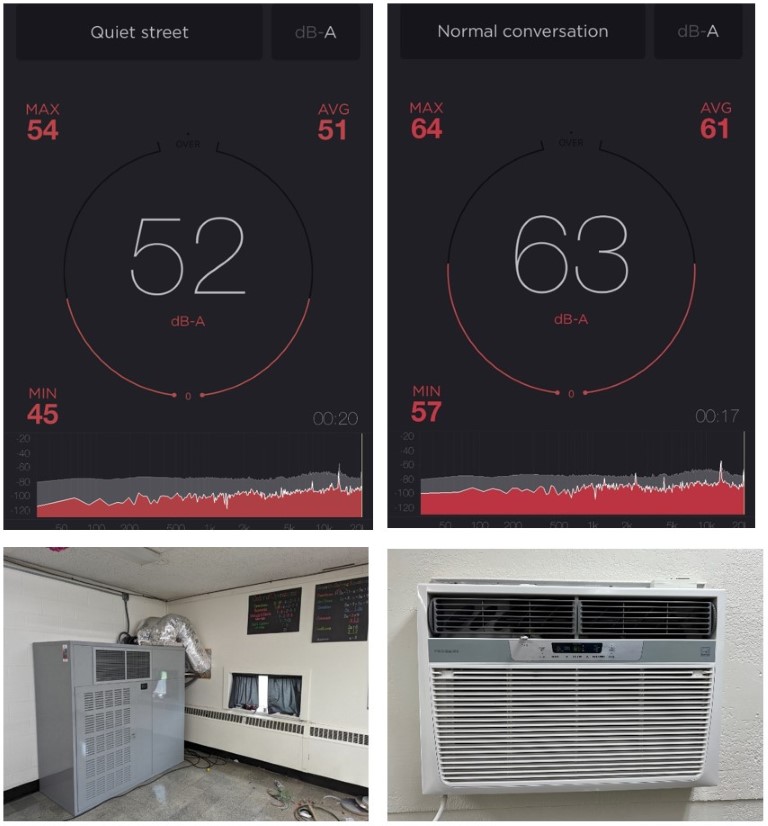
CERV-1000 and CERV-ICE Advanced Control Technology
CERV-1000 controls will look familiar to CERV Community members. The same powerful Build Equinox control technology that powers the CERV2 also controls CERV-1000 units. CERV2 owners will notice some differences on the CERV-1000 control screen that will propagate to their machines with our industry-first OTA (Over-the-Air) updating capability.
The screen shot (Figure 10) from CERV-ICE was taken shortly after CERV-1000 Unit #1 was fired up. CERV-ICE also provide Administration and Facilities personnel with detailed classroom comfort conditions (temperature and humidity) and energy data. Figure 11 shows compressor power for the heat pump’s outdoor unit on July 20, 2023. Reuben, G-RF Facilities Director, was putting the unit through its paces as he conveniently altered classroom temperature from his cellphone throughout the day. Figure 12 shows the CERV-1000 temperature responsiveness to temperature setpoint changes.
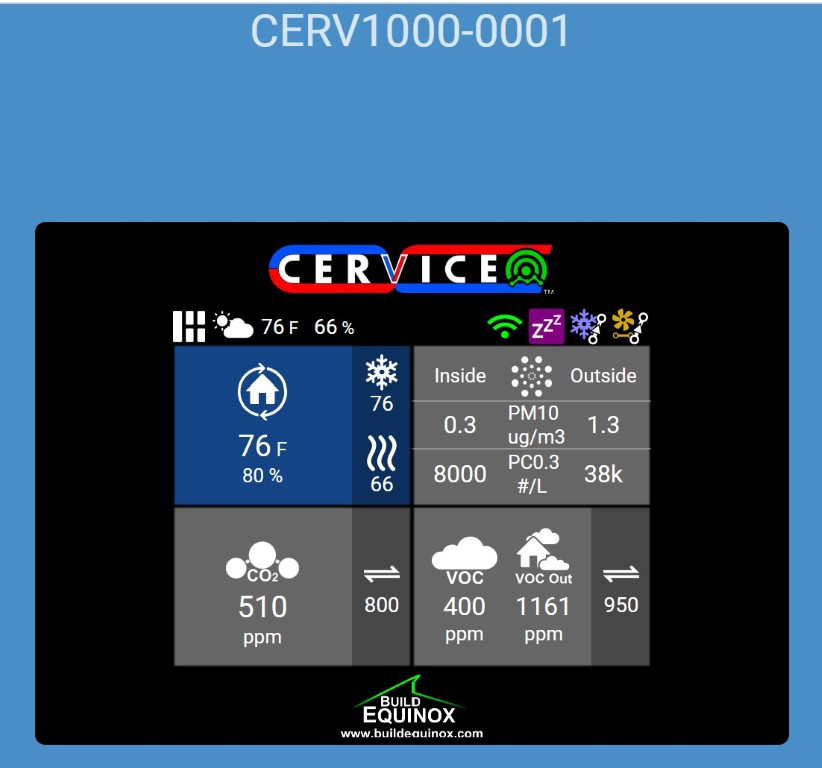
CERV-1000 energy flows provide facilities personnel with information for determining system efficiency, energy usage, and for system troubleshooting. Compressor power and classroom temperature are shown in Figures 11 and 12 below for July 20, 2023. In addition to compressor power, power used by other components (indoor heat pump heads, exhaust fan, and UVGI are monitored.
Classroom temperature was programmed to change from 75F to 72F at 6am on July 20. Classroom temperature and CERV-1000 compressor power respond as shown in the plots. At 8am, classroom temperature was changed from 72F to 70F, and from 70F to 68F at 9:30am. At 12:30, classroom temperature was increased to 72F, followed by a classroom temperature setpoint increase to 75F at 4pm.
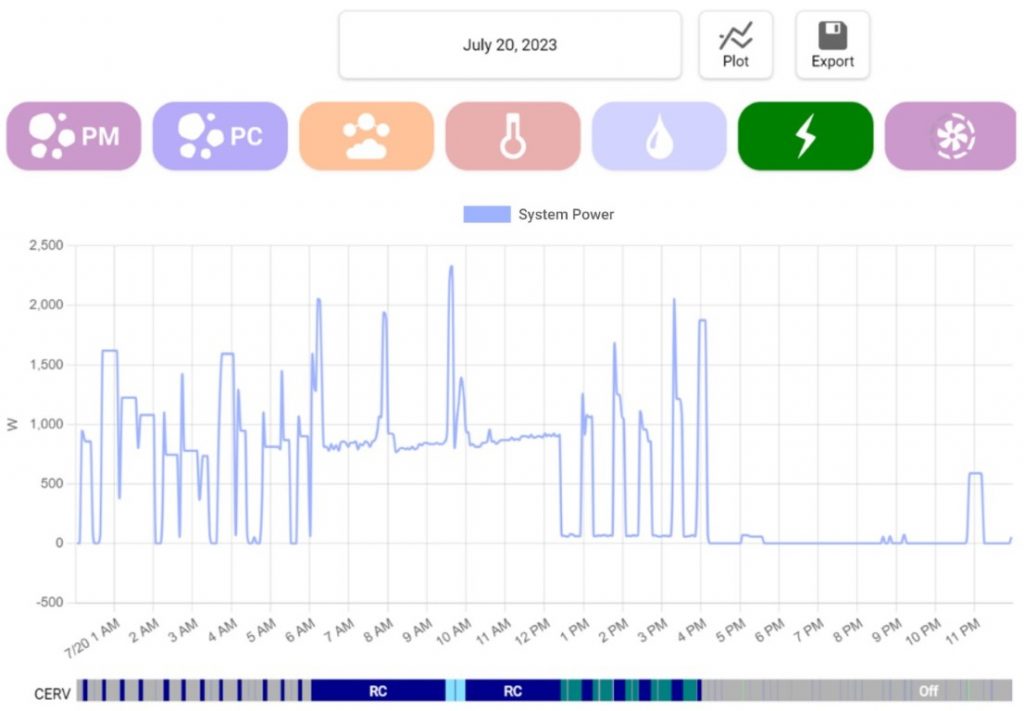
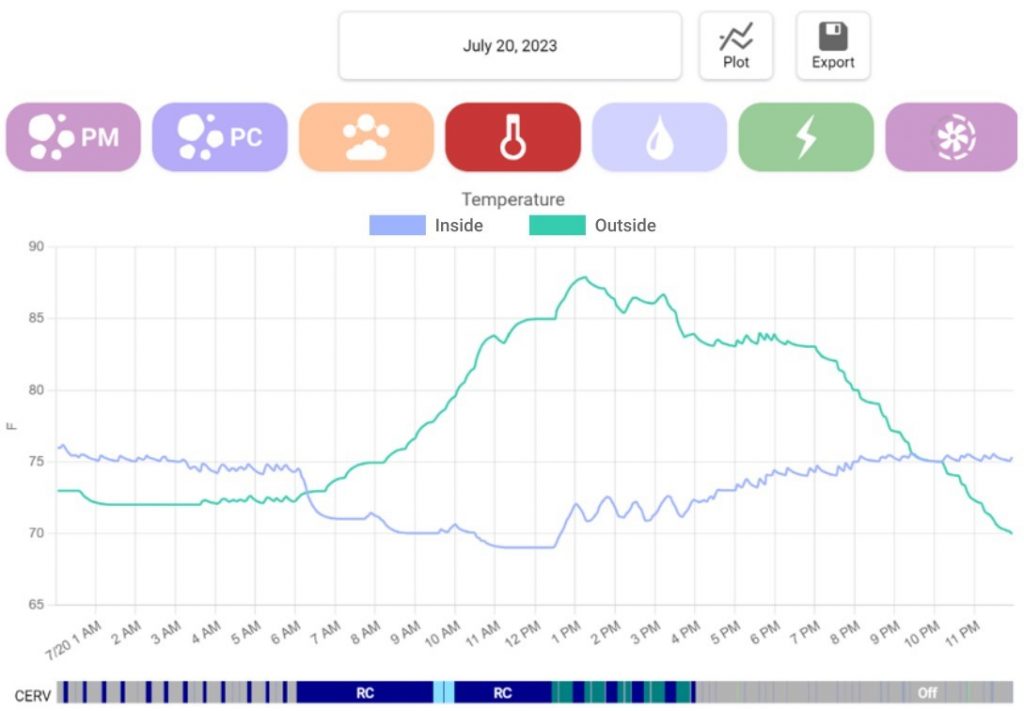
CERV-1000 units include indoor and outdoor particulate mass and particulate count sensors, in addition to indoor CO2, indoor VOC, and outdoor VOC sensors. Figure 13 shows “particulate mass” and “Particulate count” levels shortly after the CERV-1000 was placed in operation. Indoor and outdoor particulate levels were similar initially due to open windows and ducts during installation. The CERV-1000’s MERV13 filtration reduced indoor particulates on both mass and count bases.
Notice that count was initially high (200,000 to 300,000particulate per liter) while mass was below 20µg/m3, a reflection of wildfire smoke in our area that is dominated by submicron particulates that register high in “count” but may not be high in “mass”. At 250,000particulates per liter count density, at 8liter/minute normal breathing rate, we inhale 3,000,000,000 particulates per day! More than enough to deliver 10 particulates to every alveoli in our lungs each day.
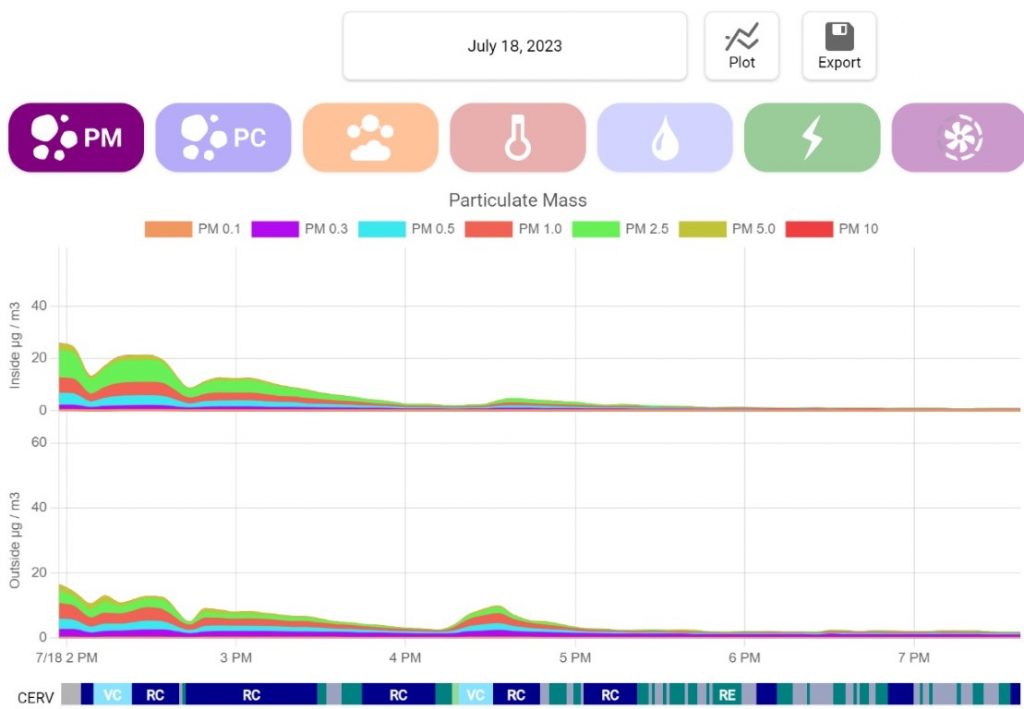
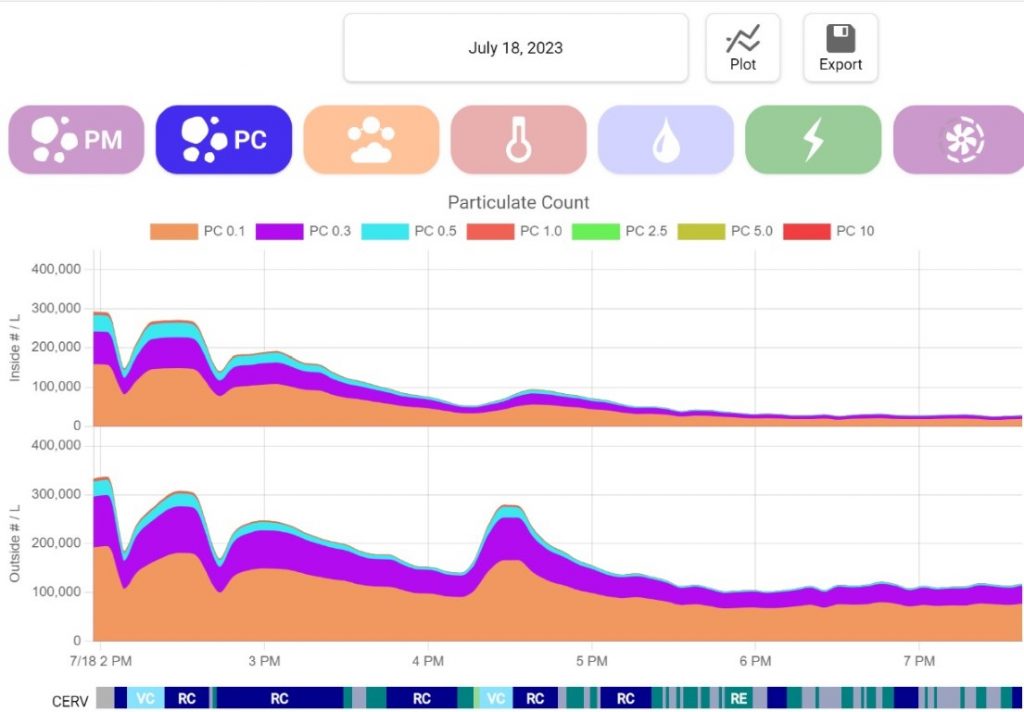
We have created new features on the CERV-1000 that will propagate to CERV2 owners in the near future. One of the most powerful features is our new scheduling tool. “Blocks” are graphically defined that allow users to choose settings that apply to time periods defined with that block. Figure 14 shows three blocks for Home, Away and Sleep settings. Figure 15 shows time blocks distributed over a weekly schedule. CERV-ICE allows bulk scheduling of multiple classrooms, school buildings, and school districts. Indoor spaces can be defined as needed apart from bulk scheduling.
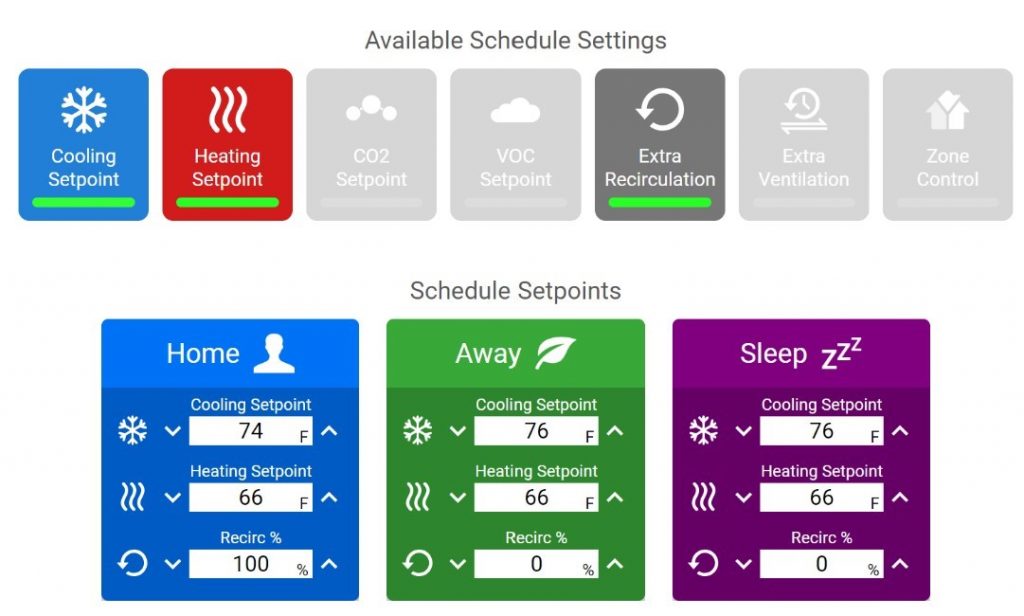
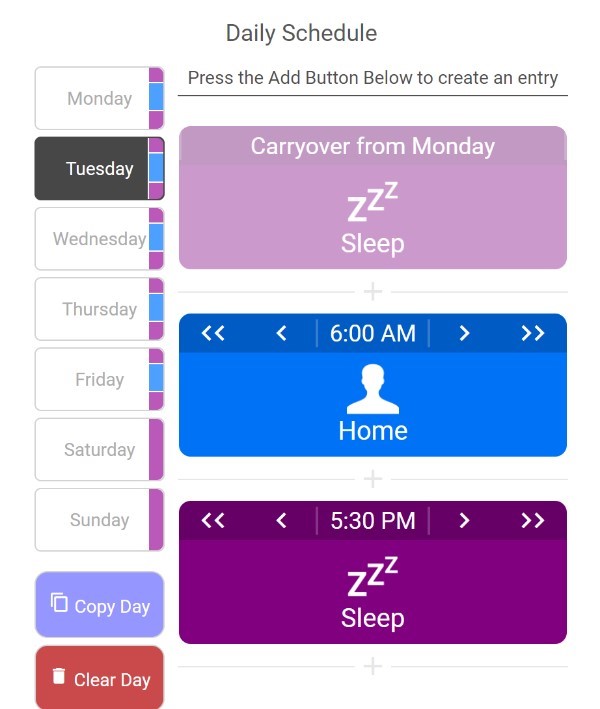
We look forward to bringing more information to you on CERV-1000 projects and performance. Stay tuned to our articles and contact us for more information anytime!























